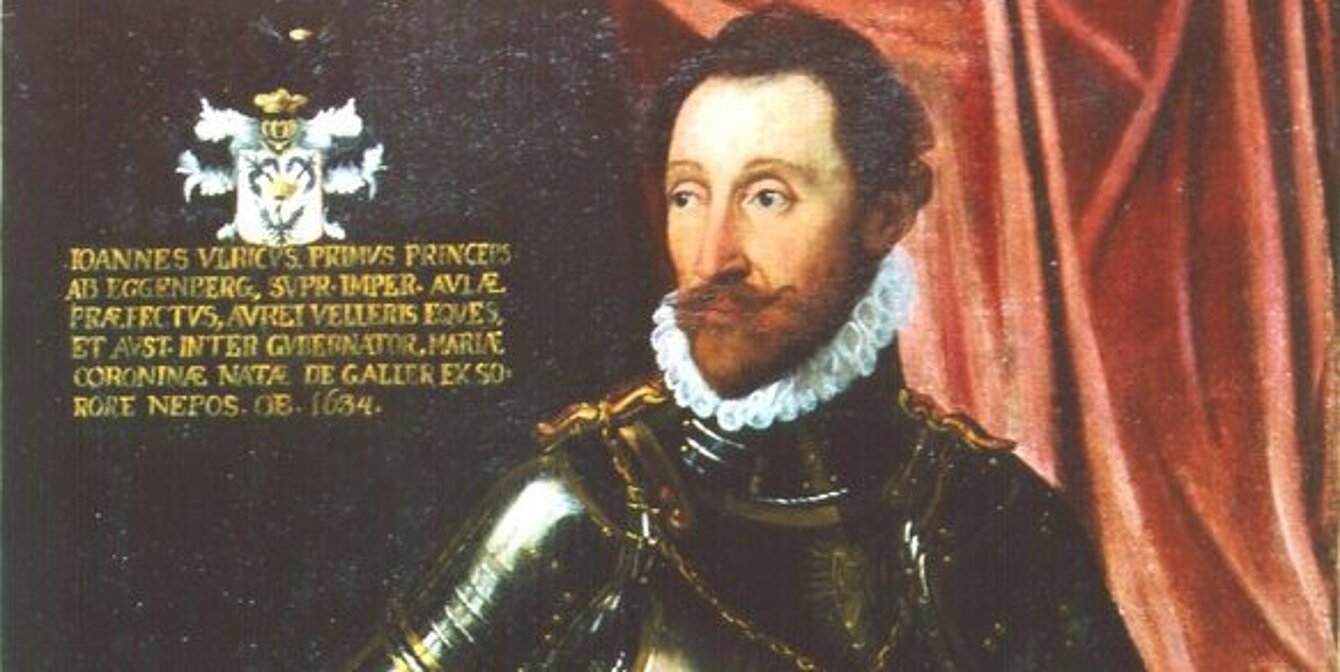Maria Elenora was twice widowed and rather old when she entered into her third marriage with Johann Leopold Count Herberstein (1712-1789) in 1740. Maria Elenora, the last Princess Eggenberg, and her young husband Johann Leopold Count Herberstein were responsible for commissioning extensive restoration and conversion work to the Palace and City Palais, which started in 1754. During renovations, the Bel Étage in Eggenberg was redesigned in the new Rococo style of the mid-eighteenth century, and has remained almost unchanged to the present day, and the gardens were completely relandscaped to reflect the French taste of the period.
After renovations had been completed, another Imperial visit - namely a Court journey by Franz Stephan and Maria Theresa to Innsbruck - marked the ceremonial and splendid inauguration of the residence and gardens in 1765. At the age of 80 Maria Eleonora died in September 1774 in Graz and her husband became the "sole heir" to the estate. The last bearer of the name "Eggenberg", her younger sister Maria Theresia, was also to die just two months later. Thus, the most famous dynasty in Styria had finally come to an end.
Johann Leopold Count Herberstein, who had been married to Maria Eleonora von Eggenberg, died in 1789. It was during this time that the last major conversions to the palace were carried out. As the couple died without issue, ownership of Eggenberg Palace reverted to the main branch of the Herberstein family whose main residence was in Silesia at the time - in the dominion of Grafenort (Goržanow), which now lies in the South of Poland.
In 1810 Eggenberg Palace was in the possession of Johann Hieronymus Count Herberstein (1772-1847) and his wife Marie Henriette. During the 19th century, the Palace was only occupied for a few weeks in the year. As a cosmopolitan and art lover, Johann Hieronymus, who called himself "Jérôme" because it was fashionable at the time in aristocratic circles to give oneself a French name, only ever resided in Eggenberg for a short period of time. He described the Palace as a significant monument, which he was to maintain, yet to which he desired to make no new changes. However, he clearly recognised the architectural value of the house and its fittings. On request, select guests were able to visit the palace as a "national monument" and were shown around by the castellan.
Jérôme Herberstein's main passion in life was, however, gardening. He had the former Baroque formal garden in Eggenberg completely redesigned to capture the style of an English landscape garden.
His son, Johann Heinrich Count Herberstein (1804-1881), did, on the other hand, enjoy spending time in Eggenberg. However, his influence was also restricted to the gardens at Eggenberg Palace, thus the rooms in the Bel Étage in Eggenberg remained almost completely unchanged up until the sale of the Palace to the Province of Styria in January 1939.
































